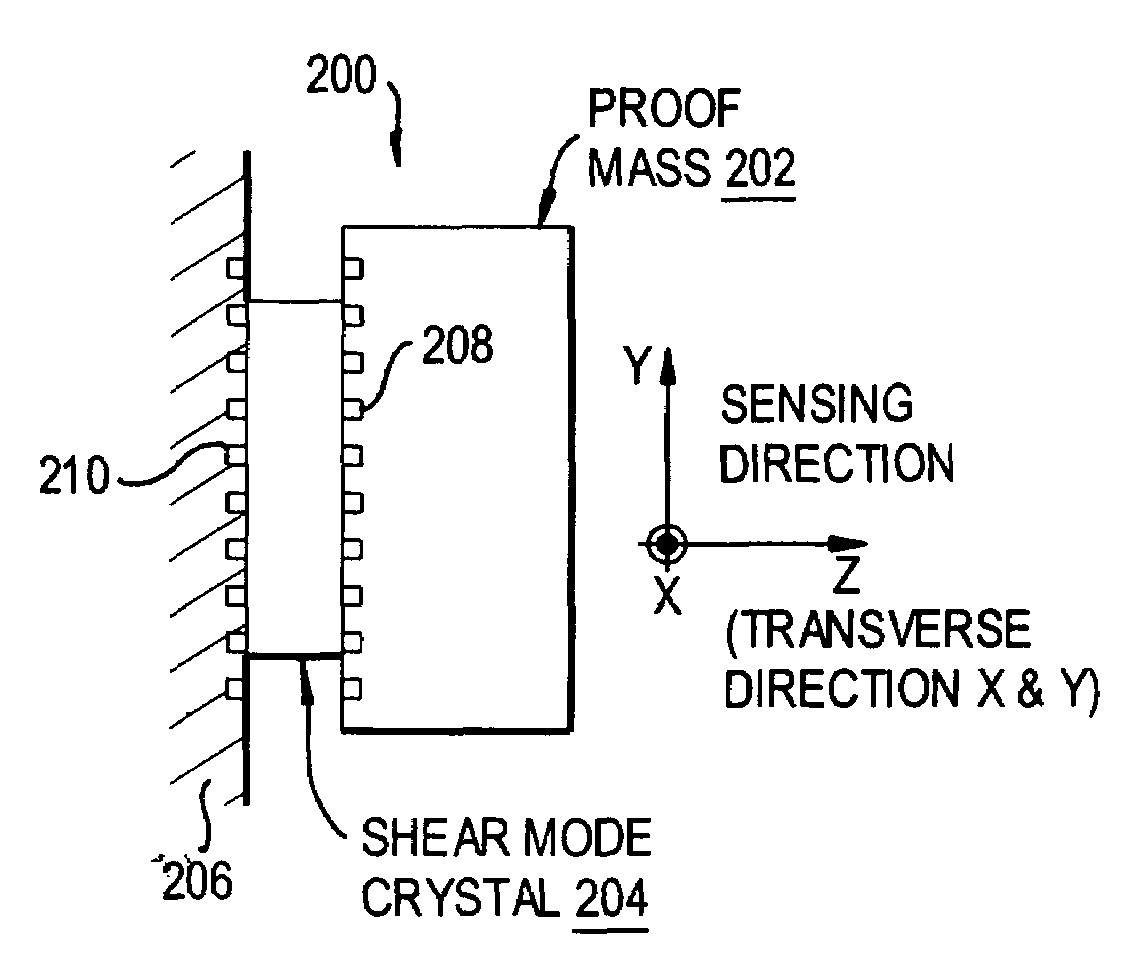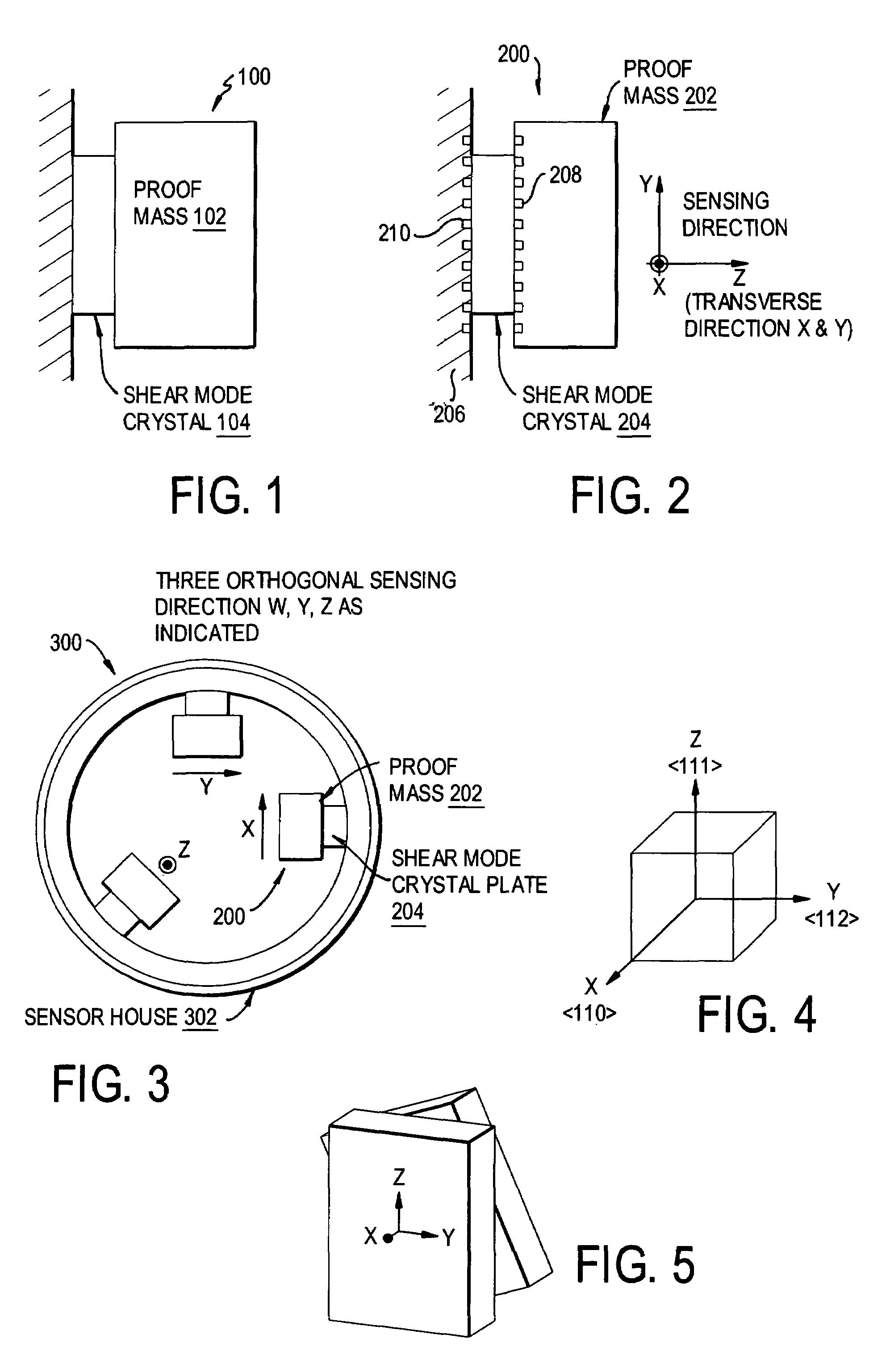Underwater acoustic vector sensor using transverse-response free, shear mode, PMN-PT crystal
a vector sensor and transverse response technology, applied in the field of underwater acoustic vector sensors, can solve the problems of vector sensor having little improvement and/or very fragile sensing structure, and low signal-to-noise ratio and narrow bandwidth, so as to reduce bonding areas, narrow bandwidth, and high noise level
- Summary
- Abstract
- Description
- Claims
- Application Information
AI Technical Summary
Benefits of technology
Problems solved by technology
Method used
Image
Examples
Embodiment Construction
[0020]In an embodiment of the present invention, by utilizing a shear mode (d15) relaxor single crystal which possesses the highest piezoelectric coefficient, coupled with the lateral constraint (clamping effect) alleviation mechanism and the identified optimal orientation of the relaxor crystal of the present invention, a vector sensor with much higher signal to noise ratio and wider frequency band can be realized.
[0021]The present invention exploits the exceptionally high piezoelectric shear coefficient (d15) of a relaxor single crystal, and it employs unique approaches to eliminate the adverse effects, i.e. lateral constraint (clamping) effect and transverse response effect. Consequently, a miniature vector sensor with high signal-to-noise ratio and wide bandwidth is achieved.
[0022]A simple shear mode, piezoelectric, inertial stack is selected as the basic sensing element. This stack, which is shown in FIG. 1 as 100, includes a proof mass 102, a shear mode relaxor crystal plate 1...
PUM
| Property | Measurement | Unit |
|---|---|---|
| piezoelectric | aaaaa | aaaaa |
| piezoelectric matrix | aaaaa | aaaaa |
| mass | aaaaa | aaaaa |
Abstract
Description
Claims
Application Information
 Login to View More
Login to View More - R&D
- Intellectual Property
- Life Sciences
- Materials
- Tech Scout
- Unparalleled Data Quality
- Higher Quality Content
- 60% Fewer Hallucinations
Browse by: Latest US Patents, China's latest patents, Technical Efficacy Thesaurus, Application Domain, Technology Topic, Popular Technical Reports.
© 2025 PatSnap. All rights reserved.Legal|Privacy policy|Modern Slavery Act Transparency Statement|Sitemap|About US| Contact US: help@patsnap.com



